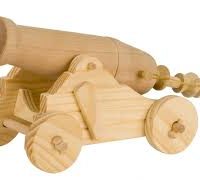Tidbits #3 – “What do you know about the canon?”

 Don’t imagine this — the twenty-seven books now included in the New Testament, plus a hundred or more others, as lying on a table in a conference room with Church authorities discussing them, one by one, to determine whether or not to include them in the canon.
Don’t imagine this — the twenty-seven books now included in the New Testament, plus a hundred or more others, as lying on a table in a conference room with Church authorities discussing them, one by one, to determine whether or not to include them in the canon.
Imagine this:
- Given the mass of literature being produced and circulated on into the second century and beyond, it is surprising how quickly unanimity was reached on the core of writings that were acknowledge to be authoritative.
- But the method by which books were to be included did not rest with a council or a committee.
- It was determined by community.
- Thus, this informal selection process evolved from the “grass roots” rather than being imposed “from above.”
- It was a collective decision reached by the Christian community at large over a period of centuries
- It was based on what literature they used in their worship services and life.
- The Council of Nicea in 325 simply formalized (i.e., placed a stamp of approval) on this emerged consensus.
Facts are:
- A consensus had emerged by the end of the 1st century that the Gospels of Matthew, Mark, Luke, and John were authoritative. The remaining question was whether the Gospel of Peter and the Gospel of Hebrews should be added to those four.
- A consensus had also arisen that the letters of Paul were authoritative.
- In dispute (what I call the seven “bubble books”) were: James, Jude, 1 and 2 Peter, 2 and 3 John, and Revelation.
- It wasn’t until the year 367 that a list of what we know as the NT finally appeared. It included all the disputed books. Athanasius, then bishop of Alexandria, in his thirty-ninth festival letter listed the twenty-seven books and termed them the “springs of salvation” and “the canon.”
- The Christian canon was now fully emerged.
- But even then, it was not universally accepted, and would not be by Christians from Syria until early in the 7th century.
- Still today, the seven disputed books tend to have less attention paid to them.
In next week’s final blog in this series, we’ll address the criteria of canon selection.
But what do you think?
[Much of the content herein is from Howard Clarke Kee, Understanding the New Testament: (Englewood Cliffs, NJ.: 1983, Fourth Ed.), 10, 373-379.]
